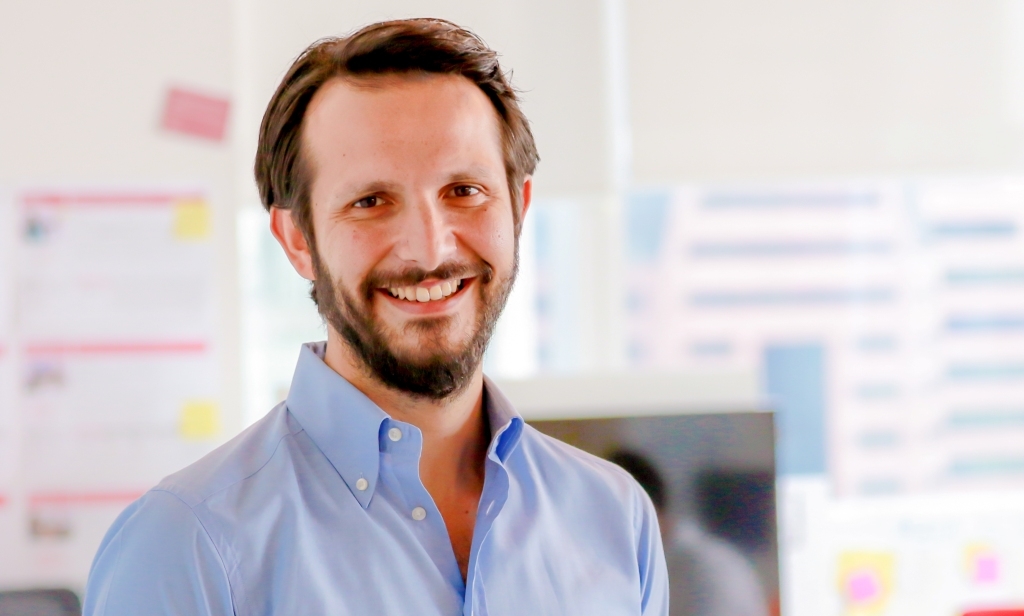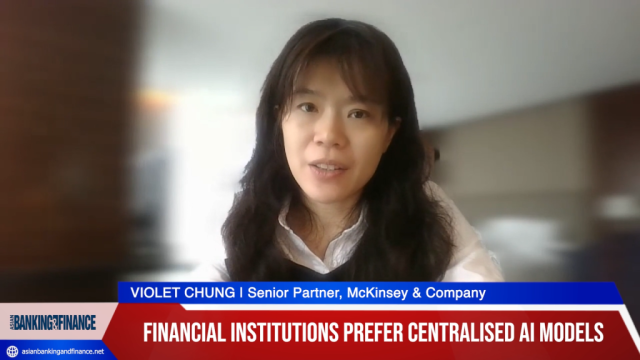
Standard Chartered's Deniz Güven discusses going digital with a human touch: Why delivering high-tech services to clients is not enough
The bank's new global head for design and client experience wants to introduce humanised, easy-to-use solutions instead.
Deniz Güven was appointed as Standard Chartered’s global head, design and client experience in May this year.
Güven has 17 years of experience in the banking industry, and his most recent role was senior vice-president of digital channels at Garanti, the second-largest private bank in Turkey. He was in charge of mobile and online banking channels, ATMs, call centres, user experience and service design.
Find out more about Güven in this exclusive interview with Asian Banking and Finance.
What makes you excited about your new position?
First and foremost, it’s exciting to join a truly global organisation. We’re in 33 diverse markets around the world, in the fastest-growing cities across Asia, Africa and the Middle East. To have such significant reach internationally – from China to Zimbabwe – and to be excelling in such a wide range of markets is a remarkable thing. It’s challenging enough to lead in one market, so to lead in such a range of markets, with such diverse cultures, is something that makes me very proud at Standard Chartered.
I am a huge enthusiast about new client experience, and this is an interesting time in banking. To maintain our leading position, we need to continue to meet and exceed our clients’ expectations – and their expectations are high, and constantly evolving. They want their bank to fit seamlessly into their lives, and Standard Chartered is committed to making sure we do.
Our vision is to be a digital bank with a human touch – to start with our clients’ needs, problems, and pain points, and create services and products that address those. That means digital and mobile products and services, and also making sure there’s someone there to help them in their branch, or by phone or chat. Ideally, we’re introducing solutions that our clients didn’t even know they wanted or needed. That’s an exciting challenge.
What three goals are you focused on?
I’ve identified three important areas of focus for right now. First, creating best-in-class client experiences across all platforms that make our clients want to come back again and again. Infusing that obsession with client experience across every department in every market around the world is to be part of our DNA. That goes for every transaction and every touchpoint – whether in person or online – in Korea, in Kenya, everywhere.
Digital will obviously be a main focus for now and well into the future. In the last two years we’ve been discussing migrating from analogue to digital, but what we did was put analogue products and services onto digital platforms. This worked, but to deliver exceptional client experiences we need to create solutions that are digital-specific, that are native to digital platforms. For example, our SelfBank solution in Korea is a fully digital account opening experience. Through video onboarding, it’s no longer necessary to go into a branch to open an account or apply for a product.
The third major focus is collaboration with third parties. This is really important for us. We have industry-leading partnerships with ApplePay, Samsung Pay and AliPay. We plan to roll out new collaboration models that we know will create a lot of value for our customers. We’re talking about new service integrations, and bank-as-a-service model. So for example a new service integration would be something like in Korea, where we use a Samsung eye verification platform to log in and sign off on transactions. This makes us more convenient than other one-time password models.
And we’re open to other, new kinds of integrations like this. As part of our BaaS model, we’ll have APIs to work with any startup or organisation. This is going to be a big change because what we want to create is more collaboration.
And we do this through our Standard Chartered eXellerator programme, the Bank’s innovation lab located in Singapore. The eXellerator builds upon Standard Chartered’s established technology outpost in Silicon Valley, SC Studios, and is the first of such a dedicated and strategic space for the Bank in Asia. Creating mechanisms for collaborating with companies that are at the leading edge of technology helps us innovate in ways that wouldn’t otherwise be possible.
What will you do differently in this position? What changes are you planning for?
I plan to change the way we think, the way we produce, and the way we interact.
First of all, the way we think – I want to start with client pain points and create solutions to address those pain points from scratch, using design thinking methodology.
For the way we produce, I see us using Agile methodology — not just for project management, but for creating digital solutions together. There is one client journey, and we will use Agile to create solutions for every point along that journey. And we’ll do that together as a team.
And the way we interact: our clients interact everywhere, all the time – so we need to be everywhere, all the time, with tools like messaging services or chatbots. We can be more conversational with our clients, and less transactional.
Another thing I want to change is the focus on experience, which I mentioned. We’ve been pushing a Most Valuable Product Strategy for the last few years. What we need to do now is focus on a Most Valuable Experience strategy across all platforms.
What are your key business philosophies?
My main philosophy is 'endeavor without a fear of failure'. One of the great things about the innovation space these days is ownership of failure, and acknowledgment that failure is a necessary part of the process. Digital is a space where we need to try and make mistakes, then try again and again and continuously improve based on what we’ve learned from our failures. That’s how innovation happens.
What previous positions prepared you for this one and how?
In my previous position, I was the head of digital in Garanti Bank. Garanti is known as a digital pioneering company. Digital is part of their DNA. We reached 5.5 million active digital customers and were the first bank in the world to introduce a number of important products and services.
For example, we launched GarantiOne, which was a mobile only and mobile first strategy that reached 300,000 clients. Another major project was MIA - Mobile Interactive Assistant, a voice-based chatbot that reached more than 150,000 users. I think she was one of the first of her kind. She got more than 8k wedding proposals from our clients! Which goes to show how a digital service can feel human to users.
At Garanti, we made mistakes. We learned from them, and made tweaks, and tried again and again and again. Garanti felt like school; we learned a lot, every day. I’m happy to bring that experience – and that emphasis on learning from our failures – to Standard Chartered.
How is digital changing the way retail banks support clients' changing preferences?
Digital should simplify clients’ lives and the way they bank. At Standard Chartered, a theme throughout our organisation is being human, and that extends to digital banking. What does digital banking with a human touch look and feel like? We think it means intuitive and easy-to-use banking experiences for our clients; banking tools online and on mobile devices that simplify payments and transactions. It means a bank that’s able to understand and even anticipate our clients’ needs based on data.
Our aim is not to deliver high-tech services to our clients. We want to introduce humanised, easy-to-use solutions that happen to leverage the latest and best in digital technology. Standard Chartered recently launched our PayNow service in Singapore; with PayNow, clients can transfer money to friends and family based on mobile number.
This is a good example of how we see banking: digital with a human touch. Customers carry around their friend’s telephone numbers, not their bank account details. There are over 50,000 clients who have signed up for this service in the first few weeks of service, so that certainly confirms how much customers are looking for convenience.
Innovations like chatbots, video/selfie banking, mobile wallets are currently making waves in the banking industry. Which technology do you think will be most relevant for banks in the next five years or so?
Any technology that makes banking more convenient is worth watching. AI, chatbots, Blockchain, the Internet of Things and many other innovations are top-of-mind. I think the three most important ones to focus on are as follows: first, digital solutions – that obsession with solving clients’ pain points with new technology.
Second, living services, which intuitively learn our likes and dislikes and become tailored to our individual and changing needs. The result is digital services that are contextually aware and able to react in real time to changes in the environment or our patterns of behavior, creating experiences in banking that are more engaging than we ever could have imagined.
Third, liquid experiences, which is the new wave of user interfaces. We are so used to searching for something or navigating, but there will be a new model of user interfaces with zero UI solutions like voice or conversational services.
What should banks do in order to deliver a seamless customer experience across digital channels?
Banks need to put the customer first. This goes beyond solid customer service – at the heart of it, this is about putting ourselves in the customer's place, and understanding them and what they need from us. Beyond this we need to accept that there is one client journey and there should be no distinction between digital and physical.
If a client starts to fill out a form on a mobile device and then stops, he should be able to finish it from another contact point without having to start over. This omni approach to creating seamless journeys will make all the difference to our clients.
What daily banking needs does a customer have? What is the most convenient way(s) for customers to bank? What are some of the pain points in making payments, interacting with the bank, etc?
We are living in a digital age, and our customers have high expectations. Banks not only need to be relevant – they also need to seamlessly integrate into our clients’ daily digital interactions. Whenever our clients need to perform a transaction or manage their money in any way, we need to be right there, on whatever platform they’re using, with solutions that are optimised for that platform.
In your capacity as a banker for 17 years, what are some of the best practices you've seen in the areas mobile and online banking that you think will also work in Asia, or in Singapore in particular?
There are a couple of examples from different markets that come to mind. First, Mbank in Poland is a great example of a bank with highly evolved digital services. Starting as a standalone digital bank, they became a legitimate bank with more than 5 million customers. They’ve since started opening physical branches. The other one is Atom Bank from the UK. Their easiness for login and mobile only approach is best practice.
Another example from the wealth side, which is not actually a bank, is Robin Hood. It’s a great example of a next-generation trading platform, which is something we haven’t seen yet from banks.
From Asia, I don’t think there’s anyone who’s doing mobile and online banking better than Standard Chartered Self Bank. It’s a combination of convenience, no-hassle onboarding and excellent design. They’re leaders in the digital space – which makes me really excited to be working with them.























 Advertise
Advertise










